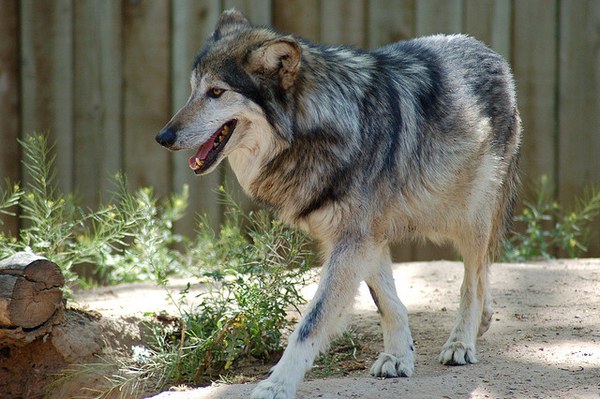Help Endangered Species
Conservation Matters
The BioPark supports endangered species through dedicated funding, research, habitat protection, education, and other initiatives. We have included some examples below.
Take Action for Endangered Species
- Visit the ABQ BioPark to meet some endangered species.
- Learn more about your favorites through your local library and online searches.
- Let your legislators know that you support conservation of endangered species and their habitat.
- Visit wild places with care. The Leave No Trace philosophy helps ensure you have a minimal impact.
- Practice conservation at home, school and work.
- Tell others what you learn about endangered species.
Some of the Ways the ABQ BioPark Helps Endangered Species

Silvery Minnow – The silvery minnow is an indicator species that suggest the overall health of the Rio Grande ecosystem. Listed as Endangered, the minnows are bred and reared at the Aquarium's Aquatic Conservation Facility (ACF). Since 1999 we have released over 1 million silvery minnows into the Rio Grande. The ACF also has maintains refuge populations of New Mexico listed, aquatic species including two invertebrates, Texas horn shell mussel and Socorro isopod, and three fish, the Zuni blue head sucker, Gray redhorse and the only 7 blue sucker fish known to exist in the state.
Socorro Dove Project – In 2008 the Zoo received 12 Socorro doves (roughly 10% of the world population) from the United Kingdom for the Socorro Dove Project. The project is an international endeavor to return the rare bird to its native home on Socorro Island, the largest of four islands in the Revillagigedo Archipelago off the Pacific coast of the Mexican state of Colima. The Socorro dove was extirpated (locally eliminated) by feral cats that were introduced in the early 1970s, high levels of sheep grazing and hunting. Several Socorro doves were taken during an expedition to the islands in 1920s and subsequently bred in the USA and later in Europe. These captive populations are breeding prolifically at the Zoo, which has plans for their eventual reintroduction.
Feather Project – There is a high international demand for feathers. The ABQ BioPark Zoo participates in a program to collect and distribute molted feathers, thus reducing pressure on wild populations. We send the tail feathers of our great hornbills to Woodland Park Zoo in Seattle. Native tribes in Indonesia and Malaysia can obtain permits for these feathers to use in ceremonial headdresses. We also provide parrot and macaw feathers from non-threatened species to local tribes for use in their ceremonies. A federal repository in Colorado Springs recieves our eagle feathers for redistribution to appropriate native American tribes for ceremonial purposes. Feathers from other species are often used by our education department for presentations to school groups.
Elephant Conservation – Wildlife Trading Gift shops located thru out the BioPark raised over $27,000 last year that went directly to our elephants here at the BioPark to help with building their new exhibit and bull barn.
